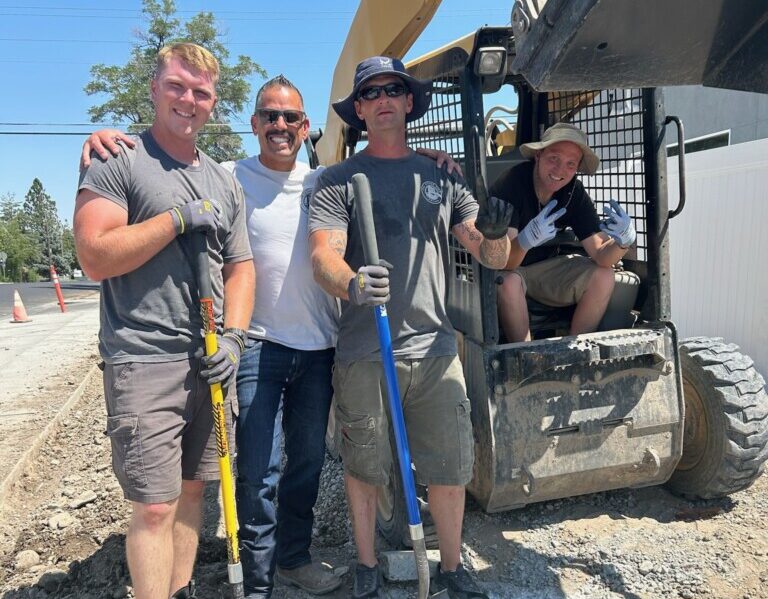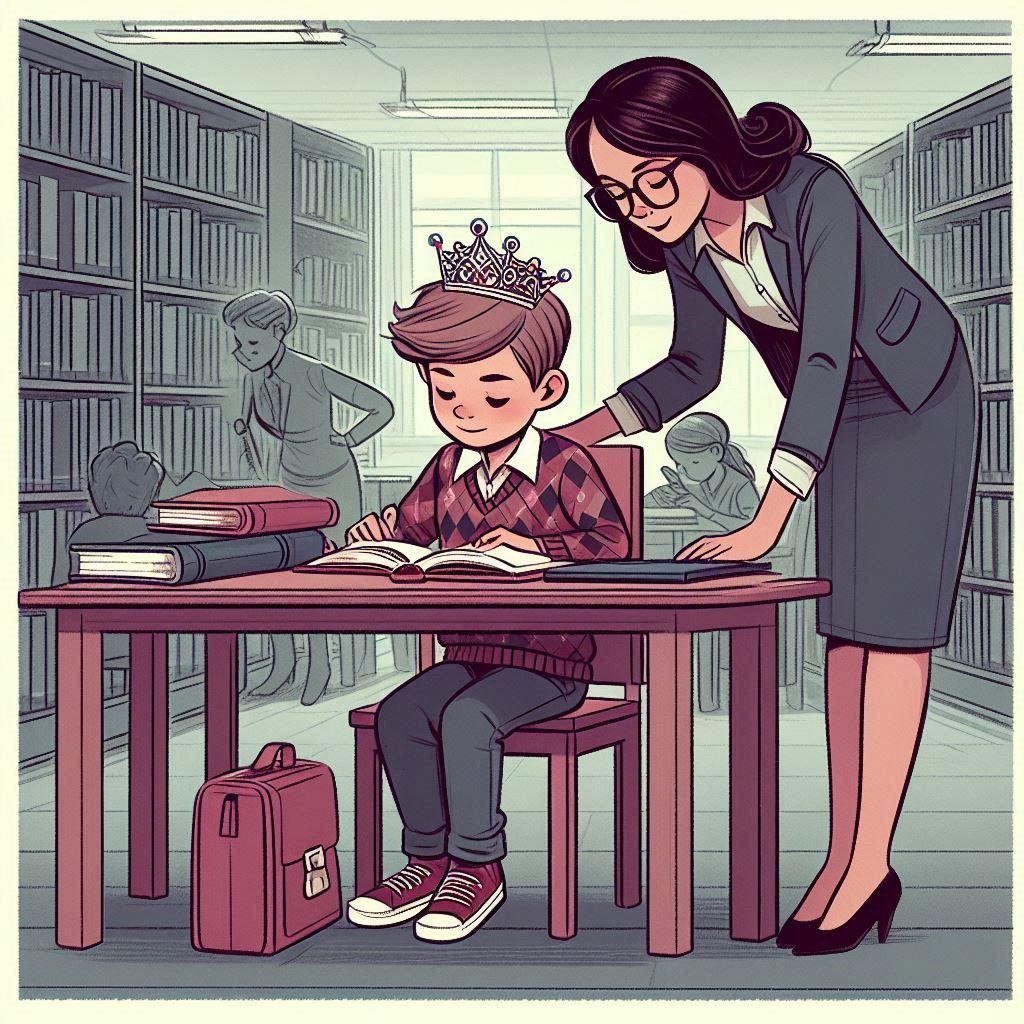The Situation For the Homeless Remains Dire “Nobody Wants to Step Up” says Ty Bellamy
Ty Bellamy’s journey to becoming one of Salt Lake City’s most recognized homeless advocates has been a long and hard road. In 2021, Bellamy championed a homeless camp called “Camp Last Hope”. This camp was located on abandoned rail lines located at 900 South and 500 West. The camp provided safety and support for homeless individuals during the winter of 2021. This camp was abated by the Salt Lake City Health Department in February 2021.
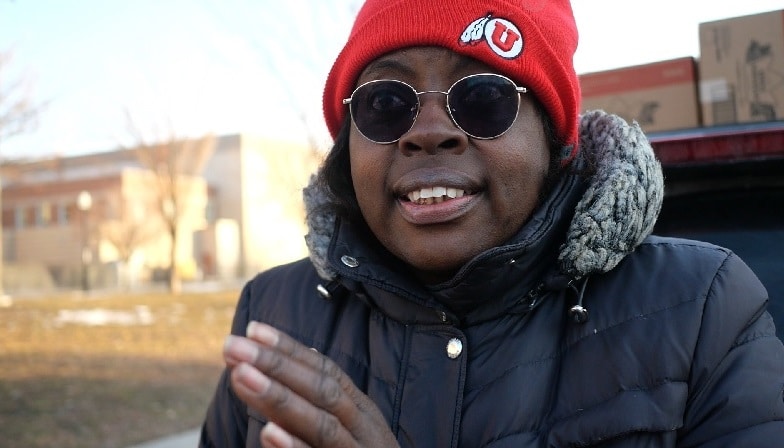
Bellamy says that– unlike this winter– Camp Last Hope was successful, in that most of the unsheltered residents residing there could take day labor, and “nobody died that winter from the cold.” Bellamy believes that if given the opportunity, she could operate a sanctioned campground that would be far more effective and safe than what we have now. The millions currently being spent on homelessness in Salt Lake City, only result in Utah’s deadliest winter for the homeless ever recorded.
Bellamy has developed her own system for obtaining homeless death counts through the Wiscombe Memorial funeral home taking care of unidentified homeless bodies. According to Bellamy there have been 15 homeless deaths since December 2022. Nevertheless, the city only officially reports five freezing deaths. She states that Salt Lake City Mayor Mendenhall’s policies are resulting in an increased number of deaths among the homeless. This is due to the increasingly frequent police abatements and policy of discarding unsheltered homeless individuals’ basic “survival gear” such as tents and sleeping bags despite the sub-freezing temperatures.
Bellamy operates a non-profit organization called Black Lives For Humanity. She is frequently seen on the streets attending to the homeless camp west of the Rio Grande train station in downtown Salt Lake City. Currently, the State of Utah is conducting its PIT count (Point in Time) count. “While this is happening they are allowing them to stay here a few days,” says Bellamy. “Last year the city received $13.6 million based on the PIT count, they wanted the community to weigh in on how the money was spent, but we never heard anything about where the money was spent,” she explains. Several dozen homeless people have been camping there since about a week prior to the Outdoor Retailers Convention.
I find Cody a lean, young man in his early thirties, pushing all of his belongings in a shopping cart. Cody says he has been homeless for three months now and that the police keep telling them to move from one side of the road to the other. “The police stopped providing little to no notice at all,” says Cody. The police are ordered to “abate” the homeless regularly. From an observer’s perspective, these measures appear only designed to harass the homeless and demonstrate to them that they are unwelcome visitors.
Bellamy attempts to mitigate the frequent abatements. She offers the unsheltered homeless supplies such as tents, sleeping bags, and food. Cody is setting up his tent and tarp to prepare for another sub-freezing night. He tells me, “Some of us out here (like myself) don’t use drugs and have simply fallen on hard times, and we are doing everything we can to survive, and they come through and bulldoze our homes. These are our homes.” Cody added, “Imagine they go and bulldoze anybody else’s home, they would go to prison for that.”
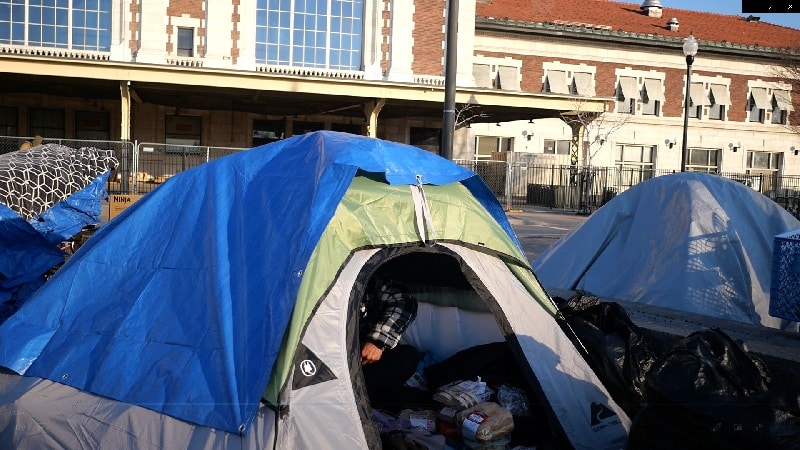
Bellamy echoes this sentiment and believes that the ACLU should be filing a lawsuit against Salt Lake City. Bellamy receives hugs and waves while we talk. Her demeanor is upbeat, but her words tell a sad story of a city and its leaders who are “unwilling to step up to take the necessary measures to prevent the ongoing problems of residents who are freezing to death in the cold.”
Homeless Deaths Continue Without Receiving Media Coverage
“A Female in her late thirties was found just off 800 West and South Temple.” Bellamy adds, “We lost Candice. And it’s heartbreaking and it’s frustrating because it didn’t have to happen.” This will be the fifteenth person we have lost since December. “ Is there an official cause of death for Candice? “I know she was using [speed] so that she wouldn’t freeze, but a lot of people are up all night so that they can cope and not freeze to death, but as they are starting to come down, they use again so they can repeatedly wake up, this frequent use is causing death.” Bellamy says that Candice had plans to visit her mother and child the next day, “She never planned on dying.” Utah Stories has attempted for the past eight months to get a count of overall homeless deaths, Salt Lake City Police Department refuses to track or provide that data to Utah Stories and other media.
According to Bellamy, the Salt Lake County Medical Examiner will conduct an autopsy on Candice, they will not release this information to anybody other than family and close relatives. The SLCPD appears to be covering this information up in their non-compliance with numerous requests for this information.
Bellamy says, “The first thing that the officer said was that this has nothing to do with the cold-weather conditions.” Bellamy contends that homeless deaths and their identities are not being investigated despite simple measures the SLCPD could take to identify bodies. She said her team identified a young man in his thirties after his body was wrapped and taken by the County morgue. She concluded his identity after finding a prescription drug at his camp. She immediately identified him with his name through a simple online search. Bellamy says, “He was logged as a John Doe.” Jeramy was from Idaho, he had a criminal history, but he should have never been filed as a John Doe.” Bellamy claims that this has been ongoing and SLCPD is not conducting even the most basic investigations into homeless identities.
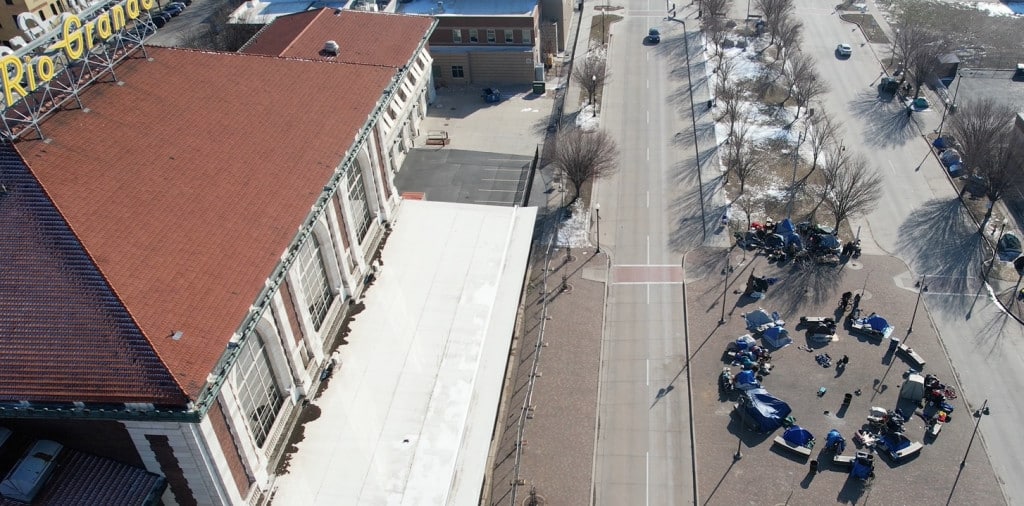
She says that she tells police while they are conducting abatements that “SLCPD is “participating in these deaths by taking away their survival gear. You are taking away their homes.”
Bellamy adds, that the police claim, “Tents are not the legal homes.” Yes they are, that is their domain; that’s where they live; that’s where they keep their personal belongings. If you don’t want to define them as a legal home so that you feel good about crashing them down and taking them away that is on you, but that is their home,” she says.
Why Aren’t More Counties and Cities Stepping Up When it Comes to Aiding Utah’s Homeless?
I asked Bellamy about Mayor Mendenhall’s remarks at the State of the City address that homelessness is a “regional issue…and that the constant finger-pointing needs to stop.” Bellany says that indeed homelessness is a regional issue, and that certainly all of the cities along the Wasatch Front need to step up. She is pleased that Salt Lake County Mayor Jenny Wilson has been instrumental in opening the Central City Recreation Center as a “warming center” at 615 South 300 East. The First United Church has also provided the homeless cots to sleep in their facility. They are also offering movie nights.
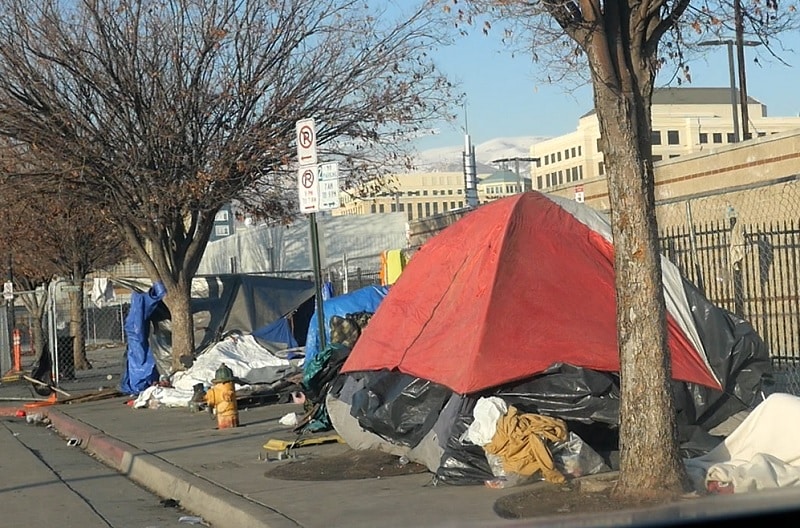
But Bellamy added that Mayor Mendenhall cannot get a pass for the treatment Salt Lake City’s homeless are suffering from, “Mayor Mendenhall took this job knowing well that Salt Lake is an epicenter of homelessness in Utah. Salt Lake City has had a serious homeless problem since she was elected, and still, Mendenhall is not showing the courage to change the inhumane policies in place.”
Bellamy said it was a huge waste of Salt Lake City’s taxpayer’s money for Mayor Mendenhall and her staff to visit Florida last December seeking homeless solutions when she could have visited Denver and witnessed how a city with a very similar climate to Salt Lake City is handling the situation in a much more responsible and humane manner.
Denver has established several sanctioned campgrounds through private/public partnerships, leasing private land, and setting up partnerships with working with area non-profit organizations to provide security, operations, and management support for camps. These sanctioned campgrounds, unlike Salt Lake City’s unsanctioned camps, ensure that the homeless population is able to keep their belongings secure when the shelters are full, and provide a viable pathway for the unsheltered homeless to obtain employment and have a pathway to get off the streets.
Numerous unsheltered, homeless individuals Utah Stories has spoken to, feel there is no pathway to get off the streets because there is no way they can keep their survival gear secure. “Why would you ever take a job, if you know when you get back your home and all of your belongings will be gone?” Cody answered when asked why he didn’t take any day-labor jobs this winter.


